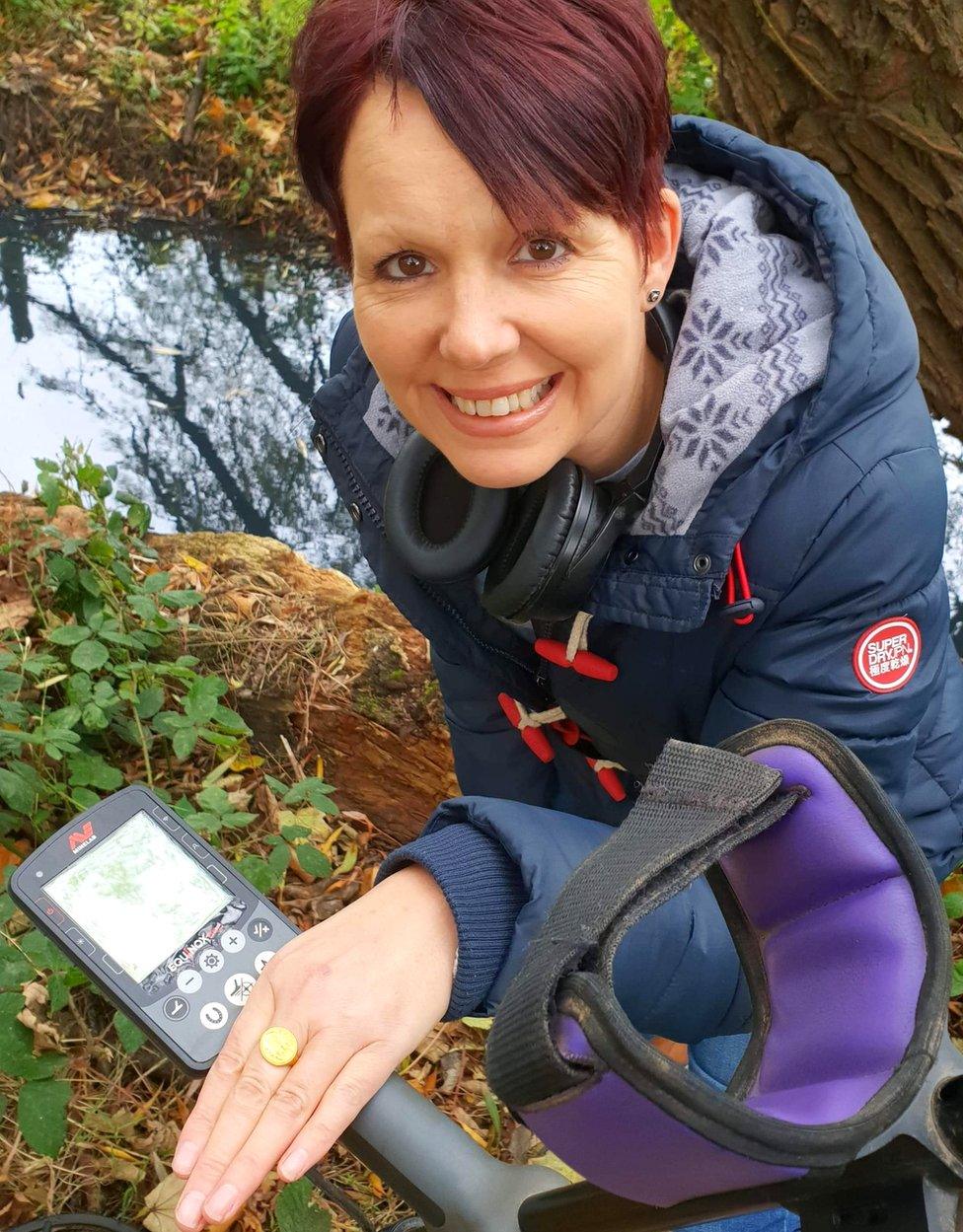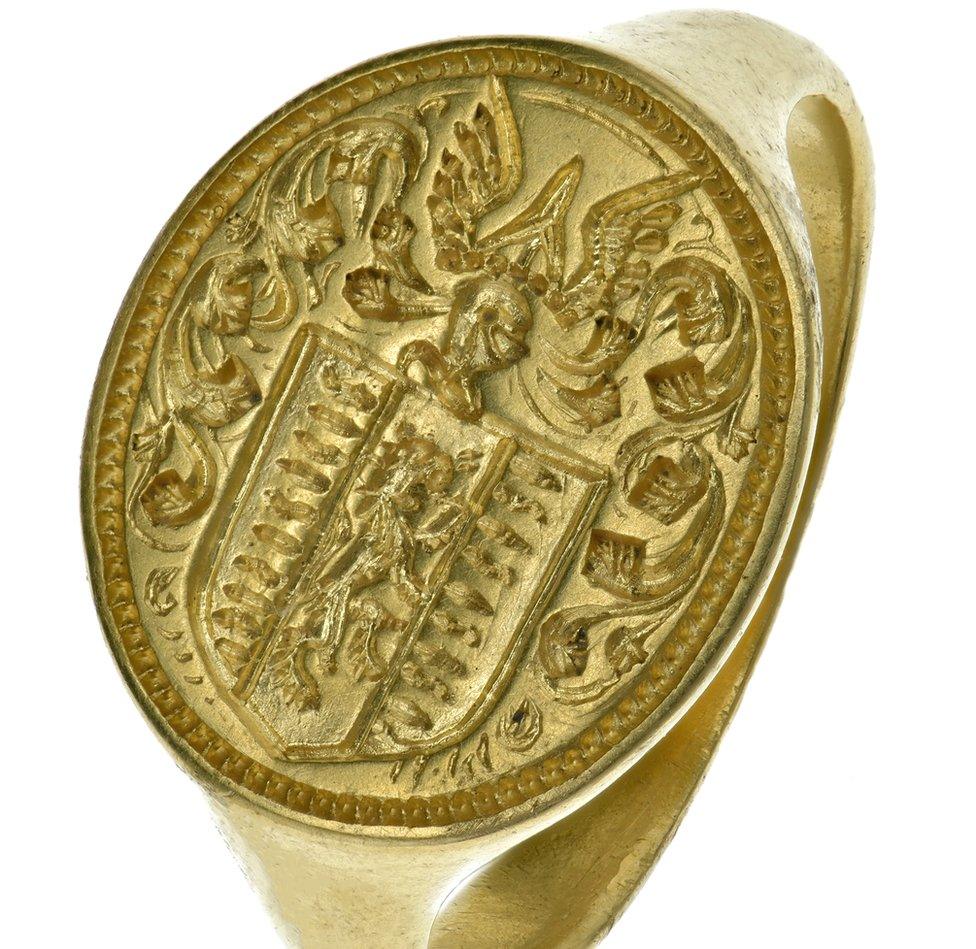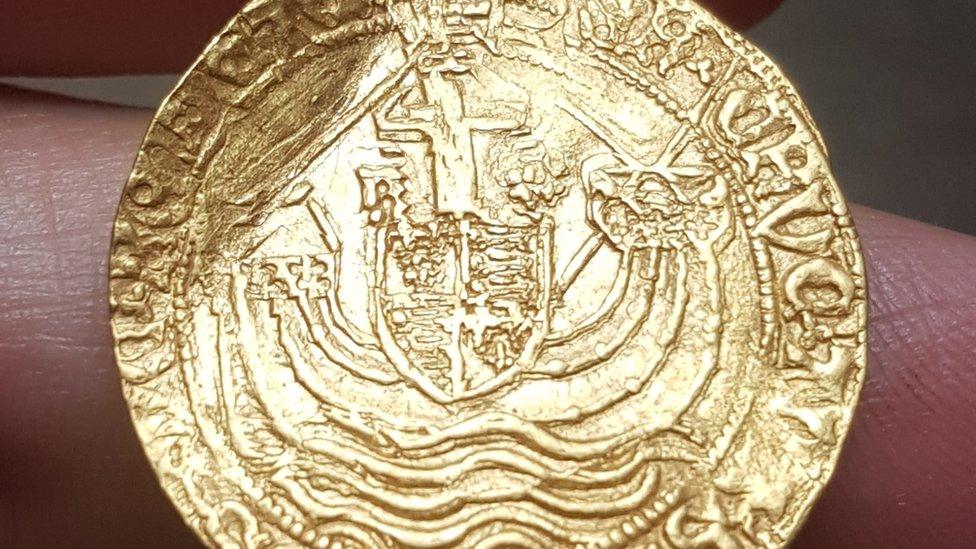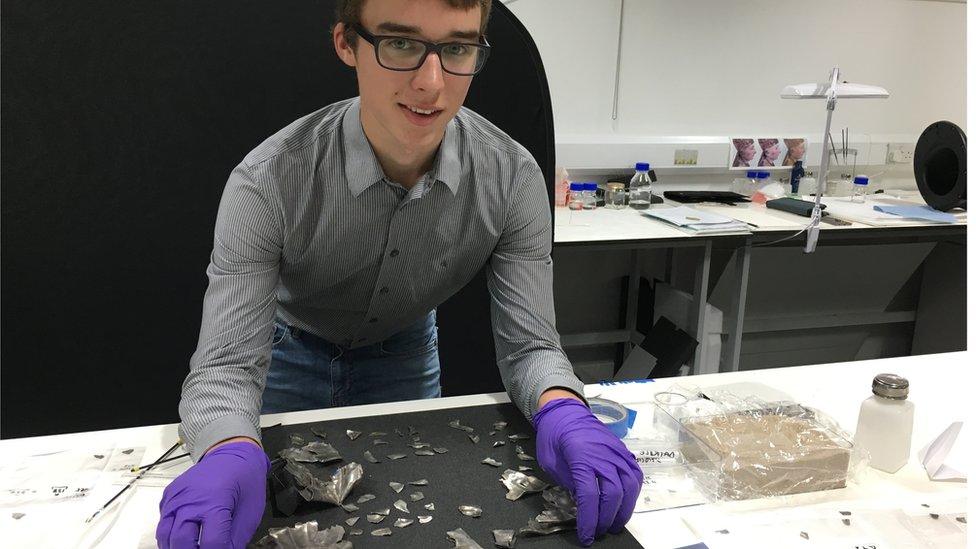Gold ring unearthed near Loch Lomond could fetch £10,000
- Published

Michelle Vall was metal detecting with her husband and found ring pulls and tractor pieces before the alert sounded for the ring

A 17th century gold ring discovered by a metal detectorist near Loch Lomond could fetch about £10,000 at auction.
Michelle Vall from Blackpool made the discovery when she searched the shore at Duck Bay near Balloch in West Dunbartonshire in January.
She had taken up the hobby two years ago to deal with panic attacks that left her confined to her home.
The ring has been dated from between 1640 and 1680 and once belonged to a courtier of the future king.
The courtier, from Suffolk, worked for James II of England (James VII of Scotland), who lived for a while in Edinburgh before he took the throne.
Mrs Vall literally struck gold when she found the jewellery which was engraved with a family crest and was probably used to stamp wax seals.
She declared the ring as a treasure to the National Museum of Scotland.
But last month, she learned the museum did not want to buy it.

Michelle Vall found the ring while combing the area at Duck Bay with her metal detector
Mrs Vall said: "Uncovering the ring was an unforeseen event as myself and my husband were detecting on a field with no particular history of finds in the area.
"We were enjoying the peace and relaxation of our wonderful hobby, finding the usual ring pulls, tractor pieces and miscellaneous metal objects.
"So when I unearthed the ring, which was close to the surface, I knew straight away that it was something special.
"It shone with a distinct bright yellow colour as I carefully lifted it out of the dark muddy hole, where it had waited for at least 350 years.
"My calm mind changed to one of excitement as I shouted Tony over, he was surprised to see the ring lying in the palm of my hand."
The ring will be auctioned at Dix Noonan Webb in London on 10 September where it is expected to fetch £10,000.
Nigel Mills, antiquities specialist at the auctioneer, said: "The Colman seal ring is an excellent example of a high status ring of the period, of which there are only a very limited number surviving in this condition.
"Metal detectorists like Michelle have contributed vastly to our knowledge by finding treasures that would have otherwise been unknown to exist."
It is not Mrs Vall's first valuable find since picking up her metal detector.
An extremely rare gold "half angel" coin she found sold for £40,800 at auction in December 2017.

The story of the Colman family

The ring is expected to attract £10,000 at auction

The auctioneers' research revealed that the ring belonged to the Colman family of Brent Eleigh, Suffolk, who used the arms on the bezel of the ring from 1598.
The same crest can be seen on the ledge slab of the tomb of Samuel Colman, who died in 1653, in the parish church of St Mary and on the Brent Eleigh village signpost.
The Colman family made their fortune in the mid 16th century from the cloth trade, in the Suffolk town of Lavenham.
They invested their wealth into land, and in 1607 Samuel Colman purchased the manors of Brent Eleigh and Fennhall, and the family rose to rank among the Suffolk gentry.
Samuel's second son Thomas was a devout clergyman in the protestant faith in the village of Brent Eleigh.
However, Thomas's only son Edward became a convert to Catholicism and had a reputation as an effective preacher of his new faith, gaining a number of converts.
In 1661 Edward established himself at court, being sworn in as a "Gentleman Pensioner", acting as a bodyguard to the King.
By 1673 Edward had been appointed Secretary to fellow Catholic, Mary of Modena, the wife of James, Duke of York, the younger brother and heir presumptive to the Protestant King Charles II.
During the end of the 1670s, James and Mary had been living in Edinburgh and in 1680 the King made James Commissioner for Scotland.
Edward Coleman worked for The Duke of York but was embroiled in an alleged plot to assassinate the King. He was found guilty of treason and in November 1678 was hung, drawn and quartered.
- Published20 April 2019

- Published1 August 2017
